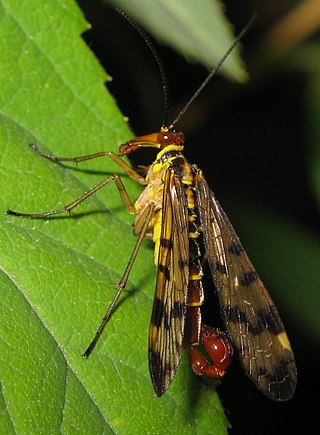Top Qs
Timeline
Chat
Perspective
Holometabola
Clade of insects From Wikipedia, the free encyclopedia
Remove ads
Holometabola (from Ancient Greek holo- "complete" + metabolḗ "change"), also known as Endopterygota (from endo- "inner" + ptéryg- "wing" + Neo-Latin -ota "-having"), is a supra-ordinal clade of insects within the infraclass Neoptera that go through distinctive larval, pupal, and adult stages. They undergo a radical metamorphosis, with the larval and adult stages differing considerably in their structure and behaviour. This is called holometabolism, or complete metamorphism.
Remove ads
Evolution
Summarize
Perspective
The Holometabola constitute the most diverse insect superorder, with over 1 million living species divided between 11 orders, containing insects such as butterflies, flies, fleas, bees, ants, and beetles.[2]
The earliest holometabolan fossils date from the Carboniferous.[3]
The Holometabola are sometimes divided into three assemblages: Neuropterida (Neuroptera, Megaloptera, Raphidioptera, Strepsiptera and Coleoptera), Hymenopteroida (Hymenoptera), and Panorpida (Siphonaptera, Diptera, Trichoptera, Lepidoptera and Mecoptera).
Molecular analysis has clarified the group's phylogeny, as shown in the cladogram.[4]
| Holometabola |
| ||||||||||||||||||||||||||||||||||||||||||||||||||||||||||||
| (Endopterygota) |
Remove ads
Description

The Endopterygota are distinguished from the Exopterygota by the way in which their wings develop.[citation needed] Endopterygota (literally "internal winged forms") develop wings inside the body and undergo an elaborate metamorphosis involving a pupal stage. Exopterygota ("external winged forms") develop wings on the outside of their bodies and do not go through a pupal stage. The latter trait is plesiomorphic, however, as it is found also in groups such as Odonata (dragonflies and damselflies), which are not Neoptera, but more basal among insects.[citation needed]
Remove ads
See also
References
Wikiwand - on
Seamless Wikipedia browsing. On steroids.
Remove ads



